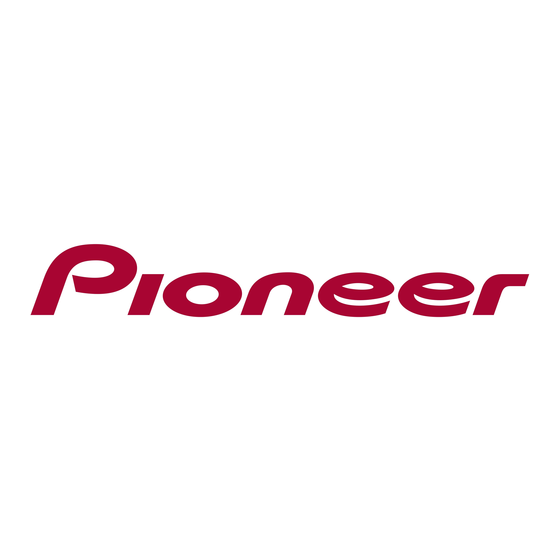Pioneer AVIC-Z1 하드웨어 매뉴얼 - 페이지 21
{카테고리_이름} Pioneer AVIC-Z1에 대한 하드웨어 매뉴얼을 온라인으로 검색하거나 PDF를 다운로드하세요. Pioneer AVIC-Z1 27 페이지. Hdd multimedia av navigation server
Pioneer AVIC-Z1에 대해서도 마찬가지입니다: 펌웨어 업데이트 지침 (5 페이지), 소유자 매뉴얼 (34 페이지), 빠른 시작 매뉴얼 (2 페이지)

• Playback of discs recorded on a personal com-
puter may not be possible, depending on the
application settings and the environment.
Please record with the correct format. (For
details, contact the manufacturer of the appli-
cation.)
• Playback of CD-R/CD-RW discs may become
impossible with direct exposure to sunlight,
high temperatures, or depending on the stor-
age conditions in the vehicle.
• Titles and other text information recorded on a
CD-R/CD-RW disc may not be displayed by this
product (in the case of audio data (CD-DA)).
• If you insert a CD-RW disc into this product,
time to play back will be longer than when you
insert a conventional CD or CD-R disc.
• Read the precautions with CD-R/CD-RW discs
before using them.
MP3 files
• When naming an MP3 file, add the corre-
sponding filename extension (.mp3).
• This navigation system plays back files with the
filename extension (.mp3) as MP3 files. To pre-
vent noise and malfunctions, do not use this
extension for files other than MP3 files.
• MP3 is short for MPEG Audio Layer 3 and
refers to an audio compression technology
standard.
• This product allows playback of MP3 files on
CD-ROM, CD-R and CD-RW discs. Disc record-
ings can be played back if they are compatible
with level 1 and level 2 of ISO9660 and with the
Romeo and Joliet file system.
• It is possible to play back multi-session com-
patible recorded discs.
• MP3 files are not compatible with packet write
data transfer.
• The maximum number of characters are 32
characters including extension (.mp3). But the
navigation system incorporates the propor-
tional font. Therefore, the number of the char-
acters which you can display varies according
to the width of each character.
• When playing discs with MP3 files and audio
data (CD-DA) such as CD-EXTRA and MIXED-
MODE CDs, both types can be played only by
switching mode between MP3 and CD-DA.
• The folder selection sequence for playback and
other operations is the writing sequence used
by the writing software. For this reason, the
expected sequence at the time of playback
may not coincide with the actual playback
sequence. However, there also are some writ-
ing software that permit the setting of the play-
back order.
• Some audio CDs contain tracks that merge
into one another without a pause. When these
discs are converted to MP3 files and burned to
a CD-R/CD-RW/CD-ROM, the files will be
played back on this player with a short pause
between each one, regardless of the length of
the pause between tracks on the original audio
CD.
• Files are compatible with the ID3 Tag Ver. 1.0
and Ver. 1.1 formats for display of album (disc
title), track (track title) and artist (track artist).
• The emphasis function is valid only when MP3
files of 32, 44.1 and 48 kHz frequencies are
played back. (16, 22.05, 24, 32, 44.1, 48 kHz
sampling frequencies can be played back.)
• There is no m3u playlist compatibility.
• There is no compatibility with the MP3i (MP3
interactive) or MP3 PRO formats.
• The sound quality of MP3 files generally
becomes better with an increased bit rate. This
product can play recordings with bit rates from
8 kbps to 320 kbps, but in order to be able to
enjoy sound of a certain quality, we recom-
mend using only discs recorded with a bit rate
of at least 128 kbps.
About folders and MP3 files
• An outline of a CD-ROM with MP3 files on it is
shown below. Subfolders are shown as folders
in the folder currently selected.
❒ The following figure is an example of the tier
structure in the CD. The numbers in the figure
indicate the order in which folder numbers
are assigned and the order to be played back.
Indicates the order in which folder numbers
are assigned.
Indicates each file. The number is assigned in
the order of the track to be played back.
19
